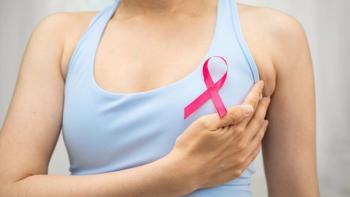
Yellow Tagged at my Infusion - It's Better to be Safe than Sorry
Key Takeaways
- Immunocompromised patients face heightened scrutiny for symptoms during the COVID-19 pandemic, impacting their treatment experience.
- Honesty about symptoms, despite potential treatment delays, is crucial for patient and community safety in cancer centers.
Going in for an infusion amid the coronavirus pandemic with a possible "symptom" of COVID-19 and wondering what risks lie ahead.
On the day of my 24th immunotherapy infusion, the nurse at the screening station of the Boston cancer center placed a yellow tag on my right wrist labeled, "Nasal congestion." Rather than going to the waiting room to get my blood drawn, I was escorted to an isolated area. Sitting to my left, four chairs away, was an elderly man likely in his 70s who was also tagged. He talked to a video translator with a nurse. He had been coughing throughout the past week, a usual symptom of his chemotherapy. However, amid this COVID-19 pandemic, no symptom is considered "usual." Even my stuffy nose put me under increased scrutiny.
I understood and even appreciated the cancer center's precautions. As an immunocompromised patient entering a building full of immunocompromised people, I was worried about unknowingly spreading or catching the COVID-19 virus. I had taken every step to be as safe as possible. I wore an N95 mask I kept from my days working as an EMT and dawned gloves that I constantly switched. Yet, as I was placed in this area for people with yellow tags, those with possible symptoms of coronavirus, I couldn't help shake the thought that lingered in the back of my mind: Should I have been upfront about my congestion?
I worried my honesty was going to cost me my infusion. Perhaps they were going to cancel my treatment, and for me, a missed treatment adds a layer of uncertainty onto the existing unknowns of whether my immunotherapy is even working to control my brain tumor recurrence. But as I sat there waiting, I knew as a patient for 16 years, an EMT for eight years and a small stint in medical school, that when it comes down to my health, particularly when my choices can affect the lives of those around me, the only option is to be honest.
As I waited for further direction, I sensed the eyes of the other patients lined up six feet apart to check-in, darting in my direction. I was tagged, and thus a leper ostracized from those I usually felt most connected to — the cancer community.
A nurse finally brought me to an empty exam room to get my IV placed and blood drawn. I could hear a group of nurses conferring in the hall, going through a checklist of items so they did not have to reach in the drawers for any additional materials and risk contaminating parts of the room.
The phlebotomist entered dressed in full personal protective equipment (PPE): Gown, mask and face shield. Knowing the scarcity of PPE around the country, I felt bad that my nasal congestion required her to use up these supplies. While she took my blood, I learned that for those without a yellow wrist tag (i.e. low-risk patients), she was only allowed to wear one mask a day. For a cancer center, one of the riskiest places to contract the coronavirus, second to nursing homes, the lack of PPE was outrageous.
With my N95 mask uncomfortably squeezing my cheeks and a new set of gloves on my hands, I went to my infusion floor. It was eerily empty and quiet with the chairs separated six feet apart. Two days before my infusion, the hospital decided that no visitors were allowed for patients over 18-years-old except for those who required assistance. Usually, there is at least one or two visitors for every cancer patient, so the population of the building had dropped by at least half. I would normally have trouble finding a seat, but on this day, there were only five or six other people on the floor.
Before I could even sit down, I was immediately brought into an exam room. The expedited experience was perhaps a silver-lining to being tagged. In the room, the nurses, again wearing masks and gloves, brought all the usual vitals equipment from the hallway into the room. The comical challenge of maneuvering the full-body scale into the room gave levity to the overall stressful experience.
After my blood tests were processed, my doctor gave me a call. He was likely only 20 feet away, but to protect each other, our in-person conversation was changed to a telemedicine appointment. Fortunately, my blood tests were normal, and he decided I should still get my treatment. I breathed a sigh of relief. I never received a COVID-19 test, but my self-isolation before my treatment reassured my doctor.
Once I was cleared, my nurses were slightly more relaxed. I received my infusion as normal and prepared to leave. After entering my car, I immediately removed the yellow tag they placed on my right wrist. While being upfront about something that seemed as small as a stuffed-up nose resulted in a hectic experience, I was ultimately comforted by the whole process.
The day before my infusion, I received a screening from a nurse over the phone. Two hours after that I received another screening from an automated menu. On the day of my infusion, everyone who entered the building was screened by a group of nurses. When I reached my infusion floor, I was again screened upon checking in. Under normal circumstances, this may have seemed maddening, but for me it was encouraging.
I have no idea how my immunotherapy and body would react to the COVID-19 virus. To know my cancer center was taking this level of caution, even tagging people with benign symptoms like a stuffy nose, reassured me for when I go in for my next infusion.





